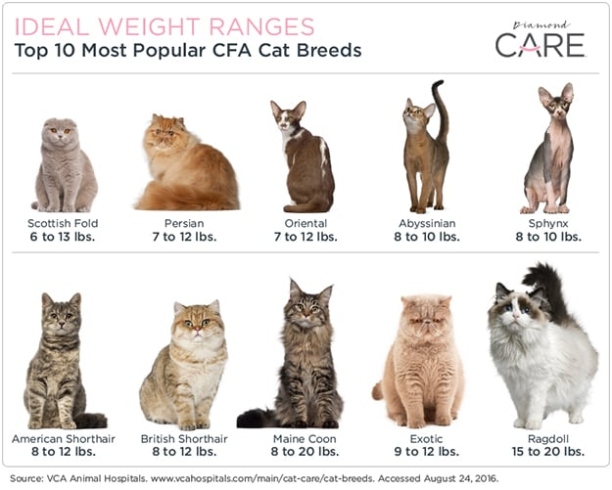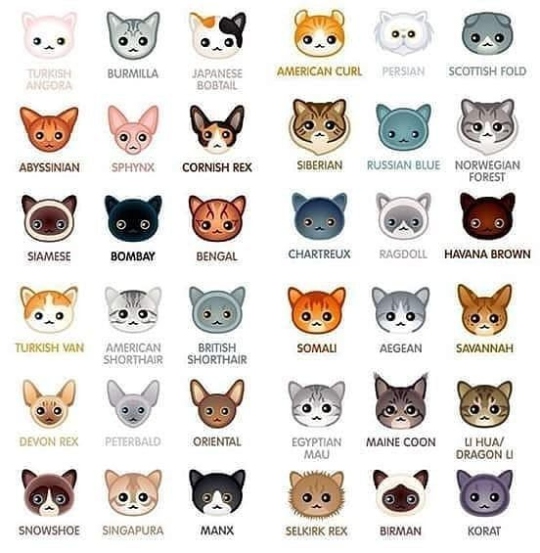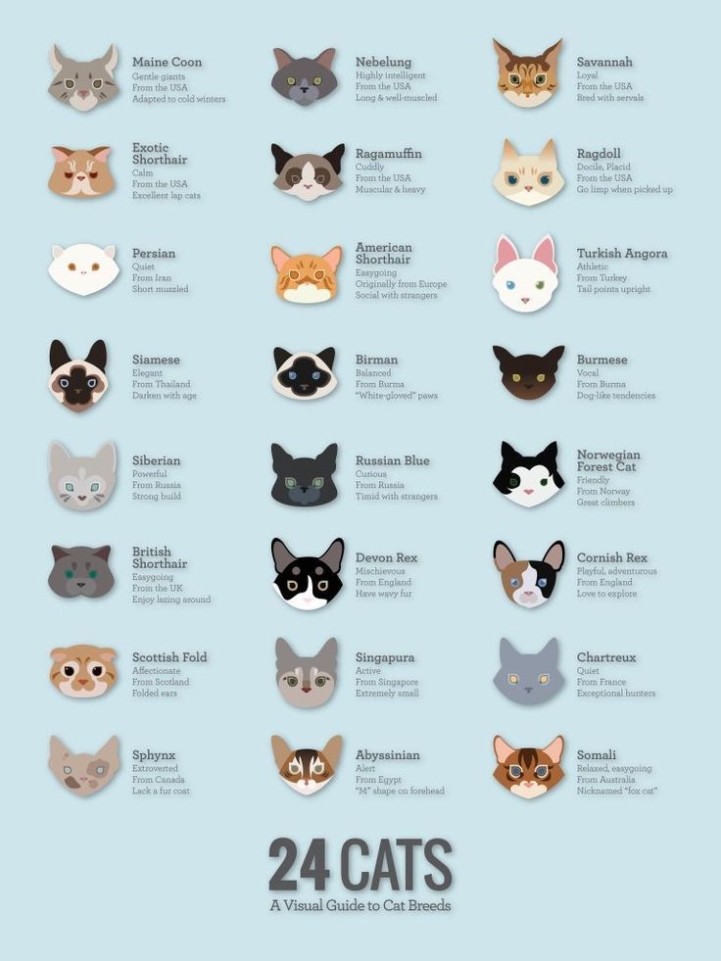Purr-suing the Perfect Purr-sian: Discovering Your Cat‘s Ancestry
Ah, the mysterious and regal Persian cat. With their luxurious fur and captivating eyes, it’s no wonder why they are one of the most popular cat breeds in the world. But have you ever wondered about the ancestry of your Persian feline friend? Where did they come from and what makes them so unique? Let’s dive into the fascinating world of Persian cats and uncover the secrets of their ancestry.

Image Source: googleapis.com
The Persian cat is believed to have originated in ancient Persia, which is now modern-day Iran. They were highly prized for their beauty and grace, and were often kept as pampered pets by royalty and nobility. The Persian cat’s long, flowing coat and striking features set them apart from other cat breeds, making them a favorite among cat lovers around the world.
One of the most distinctive features of the Persian cat is their flat face and short nose, known as a brachycephalic head. This unique characteristic is believed to have been developed through selective breeding to create the signature Persian look that we know and love today. While some may find this feature endearing, it can also lead to certain health issues in Persian cats, such as breathing difficulties and eye problems.

Image Source: pinimg.com
In addition to their physical traits, Persian cats also have a sweet and gentle temperament that makes them wonderful companions. They are known for their affectionate nature and love to be pampered and spoiled. Persian cats are often described as being lap cats, as they enjoy cuddling up with their humans and soaking up all the attention and affection they can get.
If you’re curious about your Persian cat’s ancestry, there are a few ways you can uncover more about their background. One option is to look for breeders or shelters that specialize in Persian cats, as they may have information about your cat’s lineage. Another option is to use a DNA testing kit specifically designed for cats, which can provide you with more insights into your cat’s genetic makeup and ancestry.

Image Source: pinimg.com
In conclusion, the Persian cat is a fascinating breed with a rich history and unique characteristics that set them apart from other cats. By learning more about your Persian cat’s ancestry, you can gain a deeper appreciation for their heritage and better understand what makes them so special. So, go ahead and purr-sue the perfect Purr-sian and unravel the mysteries of your beloved feline friend’s ancestry.
Claws and Effect: Decoding Your Feline Friend’s Genetic Makeup
Ah, the mysterious world of Cat breeds! Have you ever found yourself gazing into your feline friend’s eyes and wondering, What secrets lie within your genetic makeup? Well, fear not, for we are here to unravel the enigmatic origins of your beloved cat.
It’s no secret that cats are incredibly diverse creatures, with a wide range of breeds each possessing their own unique characteristics and traits. From the regal Persian to the playful Siamese, each cat breed has a story to tell – and it all lies within their genetic makeup.
So, how can you decode your feline friend’s genetic makeup? Let’s dive in and uncover the secrets hidden within your cat’s DNA.
First and foremost, it’s important to understand that genetics play a crucial role in determining your cat’s breed. Just like humans inherit certain traits from their parents, cats also inherit genetic characteristics that define their breed.
One of the most common ways to determine your cat’s breed is through a DNA test. These tests can provide valuable insights into your cat’s genetic makeup, revealing their ancestral origins and potential breed mixtures. By analyzing your cat’s DNA, you can uncover hidden secrets about their ancestry and heritage.
But what if you don’t have access to a DNA test? Fear not, for there are other ways to decode your feline friend’s genetic makeup. One clue lies in their physical appearance.
Take a close look at your cat’s coat color, pattern, and length. These characteristics can often provide valuable clues about your cat’s breed. For example, a cat with a luxurious, long coat may belong to a breed like the Maine Coon or Norwegian Forest Cat, known for their stunning fur.
Similarly, a cat with distinctive markings like tabby stripes or Siamese points may hint at their breed heritage. By observing your cat’s physical traits, you can start to piece together the puzzle of their genetic makeup.
Another key factor in decoding your cat’s genetic makeup is their behavior and personality. Different cat breeds have distinct temperament traits, from the affectionate and social Ragdoll to the independent and adventurous Bengal.
By observing how your cat interacts with you and their environment, you can gain valuable insights into their breed heritage. Does your cat love to cuddle and snuggle up on your lap? They may have traits commonly found in breeds like the British Shorthair or Scottish Fold.
On the other hand, if your cat is energetic and playful, they may share characteristics with breeds like the Abyssinian or Bengal. By paying attention to your cat’s behavior, you can uncover clues about their genetic makeup and breed ancestry.
In conclusion, decoding your feline friend’s genetic makeup is a fun and fascinating journey. By exploring their physical traits, behavior, and personality, you can uncover the secrets hidden within their DNA and gain a deeper understanding of their breed heritage.
So, the next time you find yourself pondering the mysteries of your cat’s genetic makeup, remember to look for clues in their appearance and behavior. Who knows what fascinating secrets you may uncover about your beloved feline friend!
Whisker Wisps: Unraveling the Enigmatic Origins of Your Cat
Welcome, curious cat lovers, to the fascinating world of feline genetics! Have you ever found yourself wondering about the mysterious origins of your beloved cat? Are you curious to know more about their breed and lineage? Well, you’re in luck, because in this article, we will delve deep into the enigmatic world of cat genetics and help you uncover the secrets behind your furry friend’s unique traits.
Cats have always been shrouded in mystery, with their graceful movements, elegant features, and independent nature. But did you know that each cat breed has its own distinct characteristics, traits, and ancestry? By understanding the origins of your cat’s breed, you can gain valuable insight into their behavior, health, and overall well-being.
So, how can you unravel the whisker wisps of your feline friend’s ancestry? Let’s start by exploring some key factors that can help you determine your cat’s breed:
1. Physical Appearance:
One of the first clues to identifying your cat’s breed is their physical appearance. Different cat breeds have specific characteristics such as coat color, pattern, length, and texture, as well as eye color, ear shape, and body size. By closely examining these physical traits, you can begin to narrow down the possible breeds that your cat may belong to.
For example, if your cat has a sleek, short coat with distinctive tabby markings and almond-shaped eyes, they may be a Bengal cat. On the other hand, if your cat has long, fluffy fur with tufted ears and a bushy tail, they could be a Maine Coon. By comparing your cat’s appearance to breed standards and conducting research on different cat breeds, you can start to piece together the puzzle of their origins.
2. Behavior and Temperament:
In addition to physical appearance, your cat’s behavior and temperament can also provide valuable clues about their breed. Some cat breeds are known for their playful and energetic nature, while others are more laid-back and affectionate. By observing your cat’s behavior, such as their playfulness, sociability, and vocalizations, you can gain insight into their breed’s typical traits.
For instance, if your cat is highly active, loves to climb and explore, and enjoys interactive play, they may have Siamese or Abyssinian ancestry. On the other hand, if your cat is calm, gentle, and enjoys cuddling and lounging around, they could be a Ragdoll or British Shorthair. By paying attention to your cat’s behavior and comparing it to breed characteristics, you can better understand their unique personality and heritage.
3. Health and Genetics:
Another important aspect to consider when determining your cat’s breed is their health and genetics. Different cat breeds are prone to specific health issues and genetic conditions due to their breeding history and genetic makeup. By researching common health problems associated with various cat breeds and conducting genetic testing, you can gain insight into your cat’s breed and potential health risks.
For example, certain cat breeds such as Persians are more prone to respiratory issues and dental problems, while breeds like Sphynx and Devon Rex may have skin and gastrointestinal issues. By monitoring your cat’s health, scheduling regular veterinary check-ups, and discussing their breed’s health predispositions with your veterinarian, you can ensure that your feline friend receives the best care possible.
In conclusion, unraveling the enigmatic origins of your cat’s breed can be a fun and rewarding experience that deepens your bond with your furry friend. By exploring their physical appearance, behavior, temperament, health, and genetics, you can gain valuable insight into their breed and lineage. So, grab a magnifying glass, put on your detective hat, and embark on a thrilling journey to unveil the whisker wisps of your feline friend’s ancestry. Happy sleuthing!
Fur Real: A Fun and Furry Guide to Identifying Your Cat‘s Breed
Welcome to the wonderful world of cat breeds! If you’ve ever found yourself wondering about the origins of your feline friend, you’re in the right place. In this guide, we’ll delve into the fascinating world of cat breeds and help you uncover the mystery behind your furry companion.
Cats come in all shapes, sizes, and colors, each with its own unique characteristics and traits. From the majestic Maine Coon to the sleek Siamese, there’s a cat breed out there for everyone. So, let’s get started on our journey of discovery!
First things first, it’s important to understand that cats can be classified into various breed groups based on their physical attributes and genetic makeup. These groups include the short-haired, long-haired, and hairless breeds, each with its own distinct features.
Short-haired breeds, such as the American Shorthair and the British Shorthair, are known for their soft, dense coats and round faces. Long-haired breeds, like the Persian and the Ragdoll, have luxurious fur that requires regular grooming to keep it looking its best. And finally, hairless breeds, such as the Sphynx and the Peterbald, have unique skin textures that set them apart from their furry counterparts.
Now, let’s talk about how you can identify your cat’s breed. One of the first things to look for is the color and pattern of your cat’s coat. Certain breeds, like the Siamese and the Bengal, are known for their striking coat patterns, such as stripes or spots. By familiarizing yourself with these patterns, you can start to narrow down the potential breeds that your cat may belong to.
Next, take a close look at your cat’s body type and facial features. Some breeds, like the Maine Coon and the Scottish Fold, have distinctive physical characteristics that make them easily recognizable. For example, the Maine Coon is known for its large size and tufted ears, while the Scottish Fold has folded ears that give it an adorable, owl-like appearance.
Another important factor to consider when identifying your cat’s breed is its temperament and behavior. Certain breeds, such as the Russian Blue and the Abyssinian, are known for their playful and affectionate nature, while others, like the Bengal and the Sphynx, are more energetic and curious. By observing your cat’s behavior and personality traits, you can gain valuable insights into its breed heritage.
Of course, if you’re still unsure about your cat’s breed, you can always consult with a veterinarian or a professional breeder. They have the knowledge and expertise to help you determine your cat’s breed based on its physical characteristics, genetic history, and pedigree.
In conclusion, identifying your cat’s breed can be a fun and rewarding experience. By learning more about the different cat breeds and their unique qualities, you can gain a deeper appreciation for your feline friend and better understand its origins. So, whether you have a playful Persian or a mischievous Maine Coon, take the time to explore the fascinating world of cat breeds and unravel the mystery behind your furry companion.
how to figure out what breed my cat is
